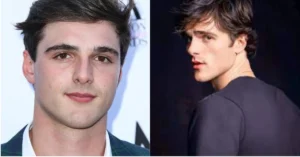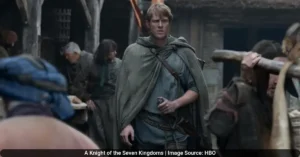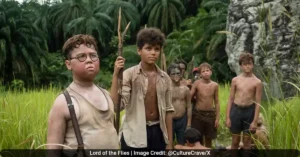For Guillermo del Toro, Mary Shelley’s “Frankenstein” is not just a story—it’s a lifelong obsession. His new film, Frankenstein, reimagines the iconic creature as a beautifully crafted being, challenging a century of cinematic tradition. Del Toro’s version, portrayed by Jacob Elordi, is designed to be “staggeringly beautiful, in an otherworldly way,” rather than a patched-up accident victim. This approach aims to reflect Victor Frankenstein’s artistic vision as much as his scientific ambition .
The film, which premiered at the Venice Film Festival and screened at the Toronto International Film Festival, has already garnered critical acclaim and lengthy standing ovations. It stars Oscar Isaac as Victor Frankenstein, a role that del Toro describes as embodying “fury, guilt, and madness,” while Mia Goth plays Elizabeth Lavenza, and Christoph Waltz appears in a mysterious supporting role. Del Toro’s adaptation remains faithful to Shelley’s 1818 novel while expanding its emotional and philosophical depths, particularly through the relationship between creator and creation, framed as a tragic father-son dynamic .
A New Vision for an Iconic Creature
Del Toro’s creature is a departure from previous interpretations, which often emphasized horror and grotesquery. Instead, his design focuses on beauty, translucency, and the aesthetic of a “newborn soul.” The creature’s skin, sourced from different bodies, features pale, almost translucent hues with subtle color variations. The scars are described as “beautiful and almost aerodynamic,” reflecting Victor’s meticulous artistry rather than haphazard experimentation .
“Victor is as much an artist as he is a surgeon, and if he’s been dreaming about this creature for all his life, he’s going to nail it,” del Toro told Entertainment Weekly. “It looks like a newborn, alabaster creature. The scars are beautiful and almost aerodynamic” .
This vision was inspired by historical art and anatomical studies. Del Toro and creature designer Mike Hill drew from sources like Marco d’Agrate’s 16th-century marble statue of St. Bartholomew and anatomical wax models used in medical training. The goal was to create a creature that feels like a “handcrafted beautiful work of art,” with its construction depicted as a joyous, almost balletic act rather than a horrific sequence .
Jacob Elordi’s Transformative Performance
Jacob Elordi’s portrayal of the creature is central to del Toro’s vision. Standing at over six feet tall, Elordi brings a physical presence that combines “balletic grace” with raw emotional depth. His performance captures the creature’s evolution from a newborn-like being discovering the world to a tragic figure grappling with abandonment and rage .
Elordi deeply connected with the role, telling del Toro, “This creature is more me than I am, and people don’t know that, and I’m going to be able to be myself through this.” Del Toro praised Elordi’s ability to bring truth and intelligence to the character, tracking the creature’s emotional journey with subtlety and power .
The Director’s Lifelong Dream
Del Toro has been developing his adaptation of “Frankenstein” for over 25 years. He first read Shelley’s novel as a child in Mexico, and it became a formative influence on his creative and philosophical outlook. He describes the creature as his “patron saint” and a figure that helped him understand concepts of sacrifice and sainthood beyond his Catholic upbringing .
“I’ve lived with Mary Shelley’s creation all my life,” del Toro said. “For me, it’s the Bible. But I wanted to make it my own, to sing it back in a different key with a different emotion” .
The film explores themes of loneliness, love, and what it means to be human. Del Toro aimed to capture the anxiety and existential questions that resonate with adolescent experiences, translating Shelley’s modernist voice into a dialogue that feels both timeless and immediate. The setting and costumes avoid the “pastel-colored period piece” aesthetic, instead embracing bold colors and swaggering fashions to reflect the novel’s original modernity .
Production and Design
The production brought together del Toro’s frequent collaborators, including cinematographer Dan Laustsen, production designer Tamara Deverell, and composer Alexandre Desplat. The creature’s design involved meticulous prosthetics and medical-grade silicone, with special effects teams creating clay miniatures to experiment with anatomical lines and joint structures .
One of the most challenging moments came nine weeks before production, when Andrew Garfield exited the role of the creature due to scheduling conflicts. Jacob Elordi stepped in, requiring a rapid redesign to accommodate his taller frame. Del Toro reassured his team by invoking the legacy of Jack Pierce, the makeup artist who created Boris Karloff’s look daily without molds: “It ain’t gonna be harder than that. So we are prepared” .
Critical Reception and Release
Frankenstein premiered to enthusiastic responses at Venice and Toronto, with some critics calling it one of del Toro’s finest works. The Hollywood Reporter described it as “epic-scale storytelling of uncommon beauty, feeling and artistry,” while TheWrap noted its “huge and singular” vision. The film’s craftsmanship, from its production design to Desplat’s score, has already generated awards season buzz .
Netflix is positioning the film as a major awards contender, alongside other high-profile releases. It will have a limited theatrical release on October 17, 2025, followed by streaming on November 7, 2025. Additionally, Insight Editions will publish “The Art & Making of Frankenstein,” a behind-the-scenes book featuring concept art, costumes, and insights from the cast and crew .
A Lasting Legacy
Del Toro’s “Frankenstein” is more than a monster movie; it’s a meditation on creation, abandonment, and the search for meaning. By redefining the creature as a thing of beauty, del Toro invites audiences to see the story anew—not as a tale of horror, but as a tragic and deeply human myth .
“People think monsters are scary,” del Toro said. “But they’re just trying to survive in a world that doesn’t love them back” .
As the film prepares for its release, it stands as a testament to del Toro’s lifelong passion for monsters and the stories they tell—stories of isolation, love, and the eternal quest for understanding.
Also Read: Jacob Elordi Spent 10 Hours Daily in Makeup for Frankenstein Monster Role















